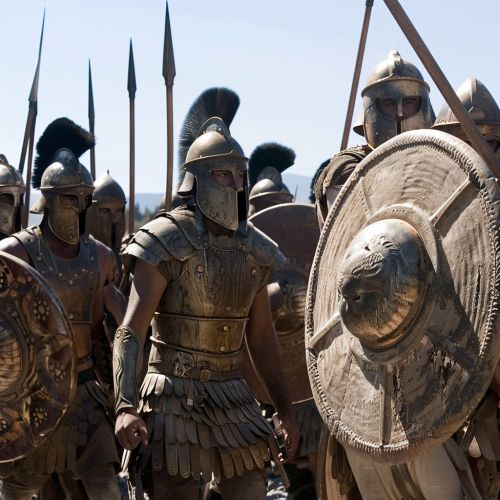Ancient Greek warfare
Origins and Evolution of Ancient Greek Warfare
Ancient Greek warfare has its roots in the Mycenaean era, around 1600 BC, when fortified palaces were established in Greece. The Mycenaean civilization was heavily influenced by the Minoan culture of Crete, which had a significant impact on the development of Greek military tactics and strategies.


The collapse of the Mycenaean civilization around 1100 BC led to a period known as the Dark Ages, during which warfare was less organized and more tribal in nature. The revival of Greek city-states in the 8th century BC marked the beginning of the Archaic period, during which warfare became more structured and organized.
Hoplite Warfare
The dominant form of warfare in Ancient Greece was hoplite warfare, named after the hoplites, heavily armed foot soldiers. Hoplites were typically free citizens of the city-states, who provided their own weapons and armor. The main weapon of the hoplite was the spear, and they also carried a round shield, a Corinthian helmet, and a short sword.
The hoplites fought in a formation known as the phalanx, a tight, rectangular formation of soldiers. The phalanx was a highly effective formation in open battle, but it was less effective in rough terrain or in situations requiring flexibility and maneuverability.
Naval warfare was a significant aspect of Ancient Greek warfare, particularly for the maritime city-states such as Athens. The primary warship of the Greek city-states was the trireme, a galley with three rows of oars on each side. The trireme was a fast and maneuverable ship, capable of ramming enemy ships or boarding them for hand-to-hand combat.


The most famous naval battle in Ancient Greek history is the Battle of Salamis, in which the Greek city-states, led by Athens, defeated the Persian fleet during the Second Persian Invasion.
Siege Warfare
Siege warfare was a common feature of Ancient Greek warfare, as the Greek city-states were often fortified with walls and towers. The Greeks developed various techniques and technologies for siege warfare, including the use of battering rams, siege towers, and tunneling.
The most famous siege in Ancient Greek history is the Siege of Troy, as described in the Iliad by Homer. However, it should be noted that the Iliad is a work of literature rather than a historical account, and the actual historical events it may be based on are the subject of ongoing debate.
Conclusion
Ancient Greek warfare was characterized by its focus on heavy infantry, organized in the phalanx formation, and its development of naval warfare. The tactics and technologies developed by the Greeks had a significant impact on the warfare of later civilizations, including the Roman Empire.
